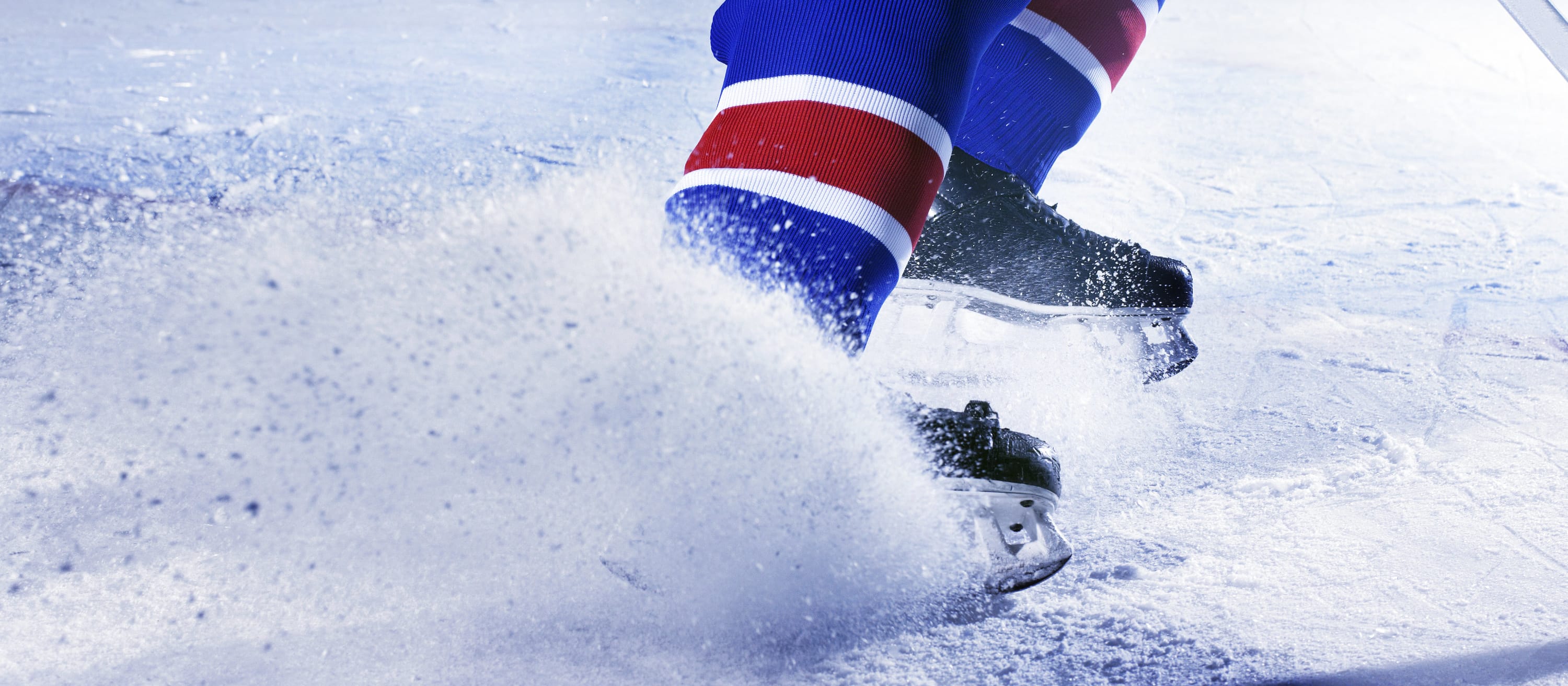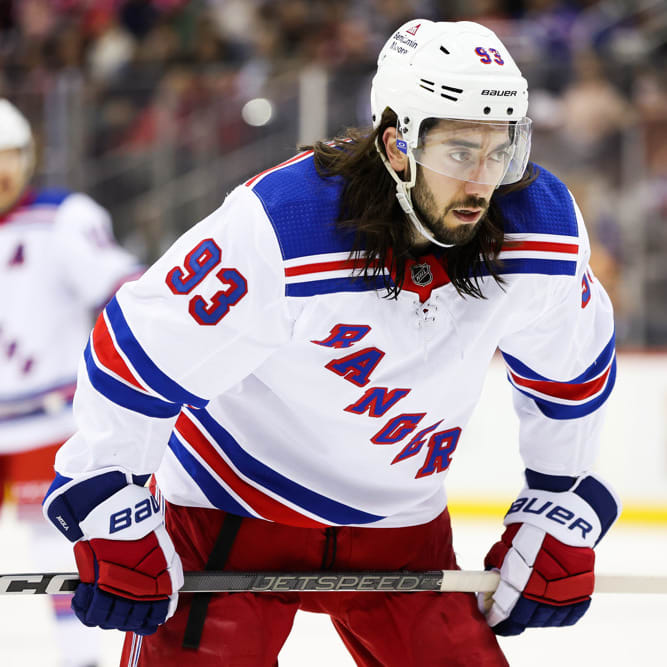This article is part of our Injury Analysis series.
Merry Christmas, everyone. Hope the holidays have been good to all the good boys and girls (young and old). As the New Year approaches, some teams are hoping for a change for the last half of the season. This year has been the year of the concussion and everyone is hoping the New Year is a repeat of the same.
Peter Regin of Ottawa is out for the rest of the year. He does not have to worry about the future because it's here. He needs to rehabilitate the injured shoulder. He had surgery on that same shoulder and he thought he was over it but he re-injured it. It sounds like he decided to forgo surgery and try to conservatively rehabilitate the shoulder. Shoulder rehabilitation starts with the trunk. The lumbar region "the core" needs to be strong and stable. The thoracic region "the mid and upper back" needs to be mobile. This mobility helps the upper torso and the arms to work opposite to the legs. This is what helps to run and skate. The shoulder blade needs to be stable. This stable base is the foundation for the arm to move from. The arm can not move and generate force efficiently if the shoulder is not a stable platform from which to move from. So you can see how shoulder rehab is not just strengthen the rotator cuff but involves a whole body approach to rehab and recovery of function.
Another player in the same situation is
Merry Christmas, everyone. Hope the holidays have been good to all the good boys and girls (young and old). As the New Year approaches, some teams are hoping for a change for the last half of the season. This year has been the year of the concussion and everyone is hoping the New Year is a repeat of the same.
Peter Regin of Ottawa is out for the rest of the year. He does not have to worry about the future because it's here. He needs to rehabilitate the injured shoulder. He had surgery on that same shoulder and he thought he was over it but he re-injured it. It sounds like he decided to forgo surgery and try to conservatively rehabilitate the shoulder. Shoulder rehabilitation starts with the trunk. The lumbar region "the core" needs to be strong and stable. The thoracic region "the mid and upper back" needs to be mobile. This mobility helps the upper torso and the arms to work opposite to the legs. This is what helps to run and skate. The shoulder blade needs to be stable. This stable base is the foundation for the arm to move from. The arm can not move and generate force efficiently if the shoulder is not a stable platform from which to move from. So you can see how shoulder rehab is not just strengthen the rotator cuff but involves a whole body approach to rehab and recovery of function.
Another player in the same situation is Cody Bass of Columbus. He is also gone for the rest of the season with a shoulder injury. There are occasions where surgery may not be the best choice for the player. This depends on the type of injury, how often he has been injured or re-injured and the overall tissue condition. Sometimes a player may elect to have the surgery because the length of time it takes to rehabilitate an injury may be quicker if surgery is performed. But this does not always lead to full and complete recovery. The medical staff will advise of the best choice(s) and the pros and cons for the player. Shoulders can be tricky because of the general unstable nature of the joint itself and the complex interaction between the trunk, the shoulder girdle, and the arm. Shoulders are also the point of contact for most of the hits so there is an added dimension to the requirements of the shoulder that must be considered during the rehab process.
David Booth of Vancouver is not in the same situation. He has a knee injury and hopes to be back in 4-6 weeks. Knee rehab starts with symptom management and then goes on to hip and knee movement re-training. Depending on the injury, the player may not have lost any strength but has difficulty utilizing and coordinating the muscles of his leg. If there is swelling in the knee which has been around for a while, this alone may cause some muscle atrophy that needs to be addressed. The issue of proper utilization can be put into these terms. If you are lifting, squatting your own body weight, the amount of effort required would change depending if you are in a pool or on land. But at times, an injury may cause our body to go overboard because it is the easiest way to deal with the injury. We try to power or muscle through it. For the average person, we think that just getting stronger will help us recovery. But this is not always the case. We need to learn how to use our dimmer switch to control the amount of effort. This ability allows us to conserve energy when we don't need to be at 100% effort. This is in part why sometimes, during the rehab process, the simple tasks seem to be so challenging or tiring.
Martin Havlat of San Jose had surgery to repair torn hamstring. He is slated to be out up to 8 weeks. It would be optimistic to think that he would be back in less time because the hamstring muscle is an important in the overall stability and mobility aspects of the hip. I would imagine the rehab will not start for about 3-4 weeks. Then the stretching and strengthening will begin. The important part of the rehab will be to retrain the coordination between the glutes and hamstring. There can be a tendency that the hamstring rehab will focus purely on the hamstring and then the hamstring will overpower the glutes and become the dominant muscle no matter the task. When this occurs, the hip region can be susceptible to injury such as a groin strain. Re-training the timing of the posterior hip muscles will assist increasing the over stability of the hip and will also improve the overall efficiency and power generated by the hip extensors.
Mark Giordano of Calgary has progressed to the point that he is skating again. He had a hamstring tear which he was able to rehab conservatively. They project that he is still about 1 month away. Now that he skating, the importance proximal posterior hip stability is crucial. If the hip is not stable, the active hip extensors that propel the skating can over power the rest of the hip muscles and the joint alignment is affected. This can cause joint pain in the long run because of the imbalance that is created or injury to other muscles like the groin muscle. The rehab will teach the hip stabilizers to engage so to maintain the femur centered in the joint vs. a forward migration of the femur which will affect the pulley action of the muscles around the hip.
Vladimir Sobotka of St. Louis is recovering from a foot injury. He was recently cleared to be out of the boot and without crutches. Good sign is that it means that he is healed enough to start to walk full bearing on the foot. The other side of all this is that caution must be paid to his activity level in the first couple of weeks. It is easy to overwork the foot after being in a boot. The boot allows the foot to heal but it also helps weaken the foot muscles. Even a simple ankle sprain can cause a change in how the foot muscles work and may weaken the active intrinsic support provided by the muscles. The rehab process needs to be gradual, initially, to allow for the foot muscles to gain the strength back so the support structures are in place for the more demanding activities such as running or jumping. They may use orthotics to assist in this recovery as a short term support for the foot so there is no collapse of the longitudinal or medial arch of the foot which then can cause other foot problems such as plantar fasciitis. The chances of these things happening are not very common but still need to be considered in maintaining an appropriate rehab program.
In case I don't get a chance next week, I wanted to wish all the RotoWire members, family and friends the happiest of New Years and the only the best of fortunes in 2012 (maybe another Stanley Cup run for the Canucks).









